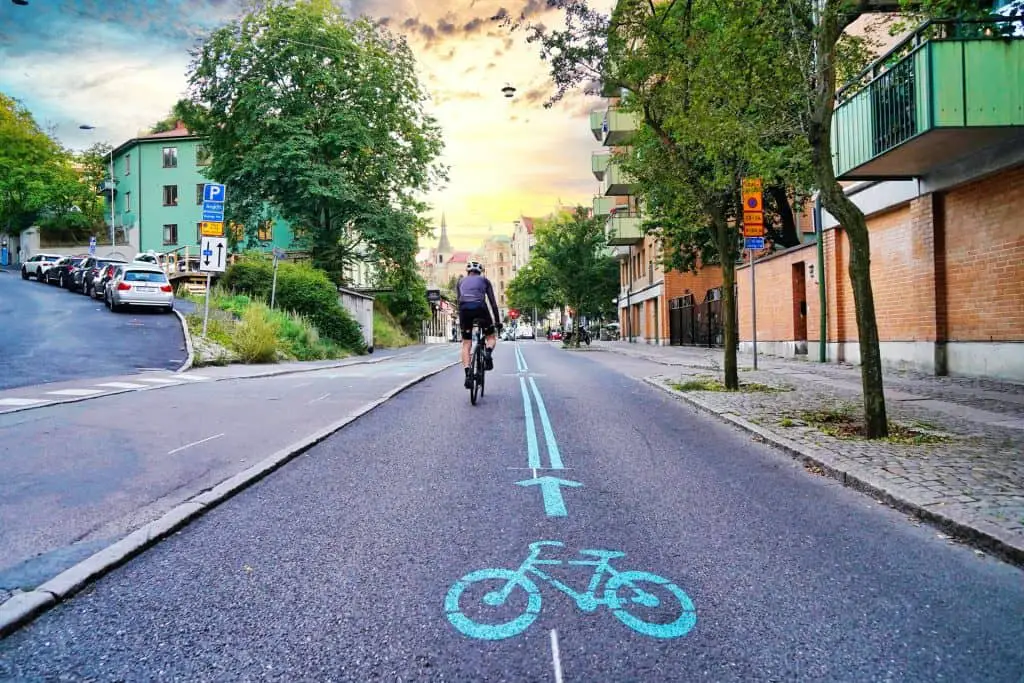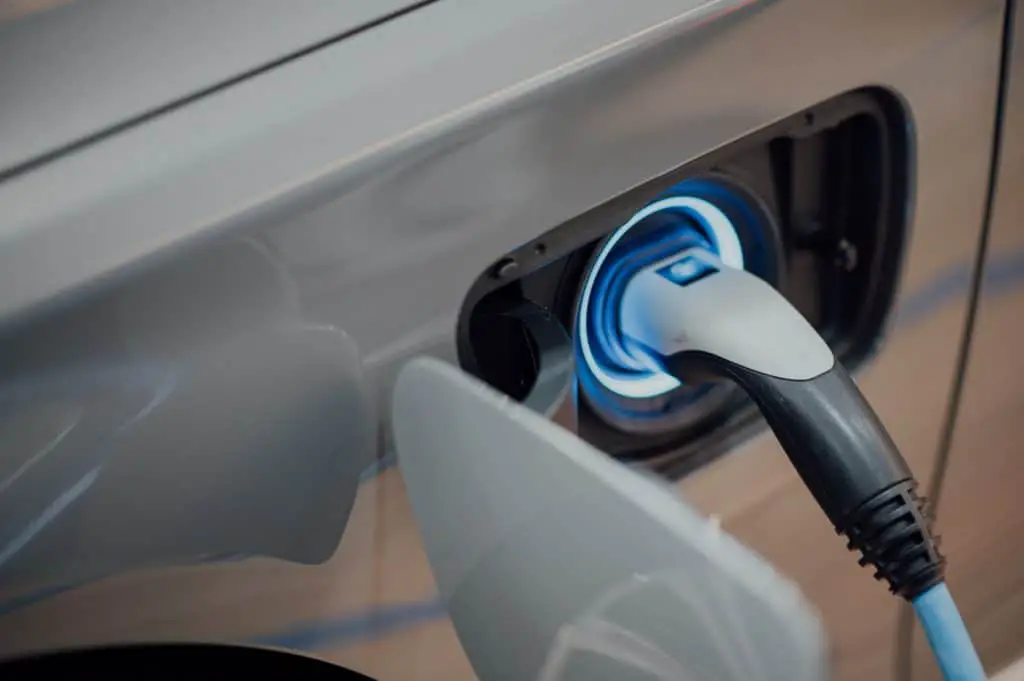In this day and age, transportation is one aspect of our lives that we cannot live without. Everybody needs to move from one point to another.
We have various modes of transport, including public transportation and personal transportation.
Most of these means of transport require energy, resulting in increased carbon footprint and air pollution, thus damaging the environment.
What Does Eco-friendly Transportation Mean?
Eco-friendly or green transportation refers to any means of transport that does not negatively impact the environment and human health.
It revolves around the efficient use of resources, reduced greenhouse gas emissions, and improved air quality around our communities. Sustainability is the common denominator in green transportation, which simply means that we can meet our current needs without compromising future generations’ needs.
Why Use Eco-friendly Transportation?
The transportation sector is responsible for about 27% of U.S greenhouse gas emissions, making it the country’s largest contributor to GHG emissions. Globally, the transportation sector is responsible for about 16% of the global CO2 (carbon dioxide) emissions. These greenhouse gases contribute to global warming and climate change.
Road transport alone contributes to about 75% of the transportation emissions. The world vehicle population is about 1.4 billion and is expected to grow to 3 billion by 2050.
This shows that the demand for transport is rising, and the challenge now is to address the need sustainably.
To stop global warming and other climate-related disasters, we must reduce the greenhouse gas emissions resulting from unsustainable modes of transportation.
We can only achieve this by switching our transportation modes to more sustainable options. Read on to discover the best eco-friendly means of transportation.
What Are The Best Eco-friendly Modes of Transportation?
1. Walking

Walking is the earliest mode of human transportation available. If you are covering short to medium distances within your area, consider walking around rather than taking a ride.
Walking has zero negative environmental impact as no harmful gases are released.
In some cities, walking can be faster than driving due to traffic congestion. Walking is a time-saving and low-cost alternative, especially if you live in a high-traffic area.
Designing road systems with pedestrian-friendly features such as sidewalks, benches, parks, and street art will encourage more people to consider walking as a means of transport.
Benefits
Besides environmental benefits, walking has numerous other benefits and can be counted as daily exercise.
Promotes healthier life by strengthening your bones and muscles.
It also helps reduce stress and tension.
Zero transport costs.
Cons
Blisters and perspiration issues. You can deal with this by getting a pair of walking shoes or shoe inserts and packing an extra set of clothes to change.
Walking may not be the best transport means when going to an important place, say an interview or a wedding.
It is also not suitable for long distances.
Not the best option if you have heavy luggage.
2. Cycling

Cycling is the most eco-friendly transportation. It is more efficient and faster than walking as it combines the use of body power with engineering.
Other body-powered options to consider are scooters and hoverboards. Electric bikes provide an even better riding experience while keeping your carbon footprint at a minimum.
In some cities, bicycling has been made a better experience with the development of bicycle lanes.
In other cities, you do not even need to own a bicycle. There are docking stations where you can hire a bike for some time and then return it, and the rates are pretty affordable.
Benefits
Cheap
Good for health; builds your cardiovascular muscles and tones your body.
It uses human energy or electric motors, thus producing zero carbon emissions.
It is convenient and gets you where you need to be at an incredible speed.
Cons
Non-motorized bikes require a lot of energy to ride.
Not suitable for long distances.
Not convenient on roads that do not have bike lanes.
Prone to accidents.
Not suitable for bad weather.
3. Motorcycles

Motorcycles are a good option for personal transportation as they can get you anywhere you need to be at your convenience.
Due to their relatively small size and low weight, motorcycles are considered more fuel efficient than ordinary cars. They also require fewer resources to build hence environmentally friendly.
Battery-powered electric motorcycles are even more eco-friendly as they do not give off greenhouse emissions.
Benefits
Convenient
Cheaper than cars
Easier parking
Cons
It can be worse for the environment. While motorcycles emit less carbon dioxide emissions, they produce higher levels of nitrogen oxide and hydrocarbons.
Increased rate of motorcycle accidents.
4. Hybrid and Electric Vehicles

Electric and hybrid vehicles are more eco-friendly than conventional vehicles.
They emit less or zero carbon dioxide emissions and are also cheaper in the long run.
All electric vehicles (EVs) have an electric motor powered by rechargeable battery packs instead of an internal combustion engine. They emit no exhaust from the tailpipe as they run on electricity and do not have any liquid fuel components.
Hybrid electric vehicles (HEV) combine a gasoline engine with an electric motor for better fuel economy and reduced emissions. Using an electric motor allows the car to operate on a small engine.
Other eco-friendly vehicles rely on clean energy such as wind or solar power.
Benefits
They have reduced carbon emissions through energy-efficient technologies such as regenerative braking and power assist.
Provide comfort and ease of travel than ordinary vehicles
Save money on fuel as fuel consumption is low
Suitable for urban mobility
Cheaper in the long run. They are made of fewer parts and thus have fewer maintenance costs.
Electric cars have reduced accidents since they have car safety features and driver assistance technologies.
Cons
Have less power than gas-powered engines and is thus unsuitable for speed and acceleration.
Higher upfront costs.
The government has been giving credits and incentives such as purchase and parking incentives to encourage citizens to adopt hybrid and electric vehicles.
The U.K has also placed a ban on petroleum and diesel cars from 2030 under their green industrial revolution.
5. Biodiesel Cars
Biodiesel cars are another environmentally friendly form of transport. While hybrid and electric cars are only suitable for city travel, biodiesel cars are a good alternative for interstate and long-distance travel.
Biodiesel is made from a mix of vegetable oils or animal fats and diesel, which makes it a renewable and biodegradable fuel alternative. The use of biodiesel reduces our reliance on fossil fuels.
Biodiesel produces fewer pollutants and greenhouse gas emissions as opposed to petroleum diesel. Experts believe that adopting biodiesel cars can reduce greenhouse gas emissions by up to 75%.
Benefits
It relies on renewable sources of fuel
Significantly reduced tailpipe emissions
Better fuel economy
Reduces over-reliance on foreign oils, which also boosts the local economy.
Cons
It can be challenging to find as there are fewer gas stations
It is slightly more expensive than conventional fuels
Not suitable for very cold temperatures
6. Public Transportation

Need to get anywhere fast while still being eco-conscious? Public transportation is your best alternative.
But how is public transport eco-friendly, you ask? Think of it this way, consider if all the people in a single bus or train decided to drive their own cars. How many cars would be on the road? More cars on the road means increased traffic and environmental pollution.
Public transportation reduces the environmental impact by carrying many people at once. The benefits of public transport continue to increase with the increase of electric trains and buses.
Benefits:
Reduced traffic congestion
You do not need to worry about finding parking spaces
Low cost
Cons
Wait times and scheduled stops may be inconvenient
Lack of seats at times
Low ridership would mean decreased efficiency
7. Carpooling

Filling the empty seats of your car as you head out is an excellent way to reduce carbon emissions. You may carpool with friends or family when heading in the same direction.
It is even better when you or one of you owns a hybrid or electric vehicle.
You can also consider sharing rides when using taxis. The average car occupancy is 1.7 passengers per ride, which is low.
Some countries have incorporated carpool lanes (high occupancy vehicle lanes in the U.S) into their road systems to encourage ride-sharing. These lanes are designated for carpooling only. You will be charged a fine if found driving alone along these lanes.
Benefits
It saves time as it allows you to drive along the high occupancy vehicle lanes
Cheaper
Reduces traffic
Cons
You may have to compromise your privacy
It may be a problem for individuals who finish work at different times or need to reach their destination differently.
What is the Most Eco-friendly Transportation?
The bicycle is the most eco-friendly transportation. Not only do bikes produce zero emissions, but they are also fun and healthy to ride.
They are cost-effective, require little maintenance, and are more energy efficient than walking. They are also cheaper and the best way to explore a new place.
Of course, bicycles may not get you everywhere you need to go, but whenever you have to choose between a 15-minute bus ride and a 25-minute bike ride, the latter would be better for you and the environment.
To encourage more people to cycle, various countries have started running campaigns and initiatives that support cycling. The U.S, for example, is creating an extraordinary 3700-mile bike trail, The great American Rail Trail, that stretches from Washington DC, across 12 states, to the Pacific Ocean.
Is Air Travel Eco-friendly?

The aviation industry is responsible for about 2.4% of global greenhouse gas emissions. Though this may seem a small figure, it comes from the tiny population of around 20% that uses air travel globally. This means the aviation industry would rank among the top ten emitters if it were a country.
Conventional airplanes are regarded as the least eco-friendly mode of transport. This is because they consume more energy and produce more greenhouse gases than other transportation modes.
How can we make air travel eco-friendly?
For business, you can consider video conferencing and other online communication tools. If you have to travel, consider combining business trips with vacation trips. Companies could also consider sending fewer individuals to specific events.
For leisure travel, staycations are perfect alternatives to vacation travel. Family road trips or driving in hybrid cars are also great alternatives.
If traveling interstate, consider taking trains as they are more eco-friendly and allow you to enjoy scenic views as you travel across the country.
If using a plane is unavoidable, consider these smart choices developed by Dan Rutherford, shipping and aviation director at the International Council on Clean Transportation (ICCT), to minimize your carbon footprint. He describes the four-step process as flying like a NERD;
First, go for airlines with the newest aircraft. Newer aircraft have higher energy efficiency and emit fewer carbon gases than older ones.
Secondly, choose the economy over the first and business classes. This is because the expensive seats take up more space and are heavier. They also end up with more empty seats. Also, reduce your luggage as much as possible. The heavier the bag, the more fuel is consumed.
Thirdly, avoid very large and very small (regional jets) planes. Single aisle or small twin-aisle aircraft are more fuel efficient than larger planes.
Lastly, whenever possible, always take direct flights. It helps reduce fuel burn caused by circuitous routes.
To curb the negative environmental impact of air travel, some airlines are now using sustainable aviation fuels (SAF). Adopting green technology such as hydrogen fuel cell-powered airlines is another option to make air travel sustainable.
How Can Transportation Go Green?
Whether commuting to work, running errands, or simply traveling for leisure, you can make little effort to make transportation more eco-friendly.
Here are simple yet very effective tips to start practicing green transportation;
First of all, avoid car travel as much as possible. Only make extremely necessary trips. For example, opt for virtual meetings instead of physical meetings.
If using car travel, consider small and lighter vehicles as they are more efficient than larger and heavier ones. Hybrid and electric cars are even more efficient.
When shopping online, you can make a difference by choosing not-so-urgent deliveries. You can also consider having your deliveries sent to a delivery locker to reduce the risk of misdeliveries or any extra trips.
Have some flight guilts? Purchasing carbon offsets is an excellent way to take responsibility for your emissions and assuage that feeling.
Final Thoughts
In a world where everything is moving fast, it is easy to look down on the environmental impact of some of our actions. As climate change intensifies, it is high time we slow down and consider how our actions could affect the environment.
By considering eco-friendly transportation, you will be one step ahead in fighting the climate change crisis we are experiencing today.
I’m curious, what has been your experience with eco-friendly transportation? I’ll be in the comments section waiting to hear from you!
